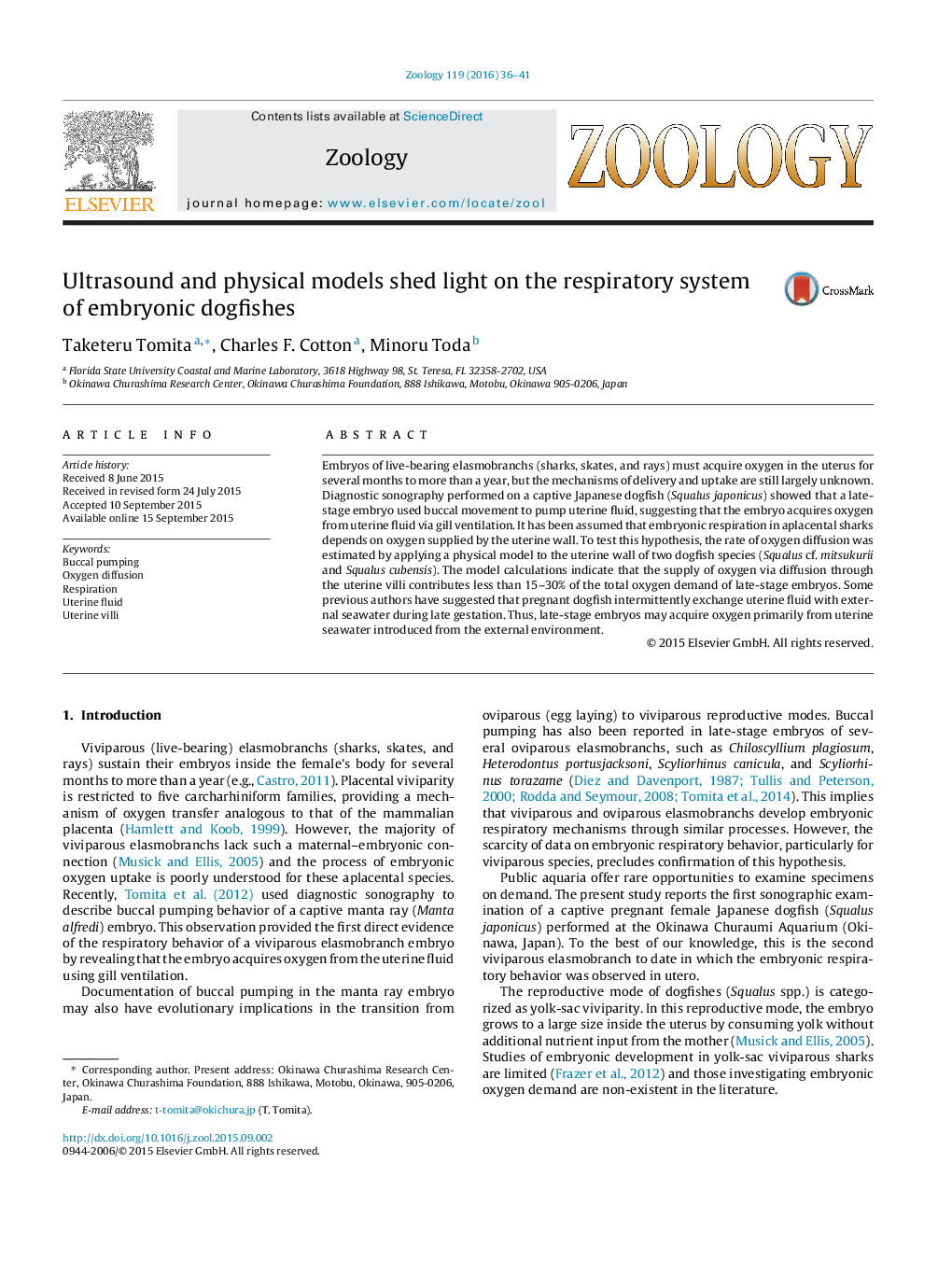| Article ID | Journal | Published Year | Pages | File Type |
|---|---|---|---|---|
| 5896403 | Zoology | 2016 | 6 Pages |
Abstract
Embryos of live-bearing elasmobranchs (sharks, skates, and rays) must acquire oxygen in the uterus for several months to more than a year, but the mechanisms of delivery and uptake are still largely unknown. Diagnostic sonography performed on a captive Japanese dogfish (Squalus japonicus) showed that a late-stage embryo used buccal movement to pump uterine fluid, suggesting that the embryo acquires oxygen from uterine fluid via gill ventilation. It has been assumed that embryonic respiration in aplacental sharks depends on oxygen supplied by the uterine wall. To test this hypothesis, the rate of oxygen diffusion was estimated by applying a physical model to the uterine wall of two dogfish species (Squalus cf. mitsukurii and Squalus cubensis). The model calculations indicate that the supply of oxygen via diffusion through the uterine villi contributes less than 15-30% of the total oxygen demand of late-stage embryos. Some previous authors have suggested that pregnant dogfish intermittently exchange uterine fluid with external seawater during late gestation. Thus, late-stage embryos may acquire oxygen primarily from uterine seawater introduced from the external environment.
Related Topics
Life Sciences
Agricultural and Biological Sciences
Animal Science and Zoology
Authors
Taketeru Tomita, Charles F. Cotton, Minoru Toda,
